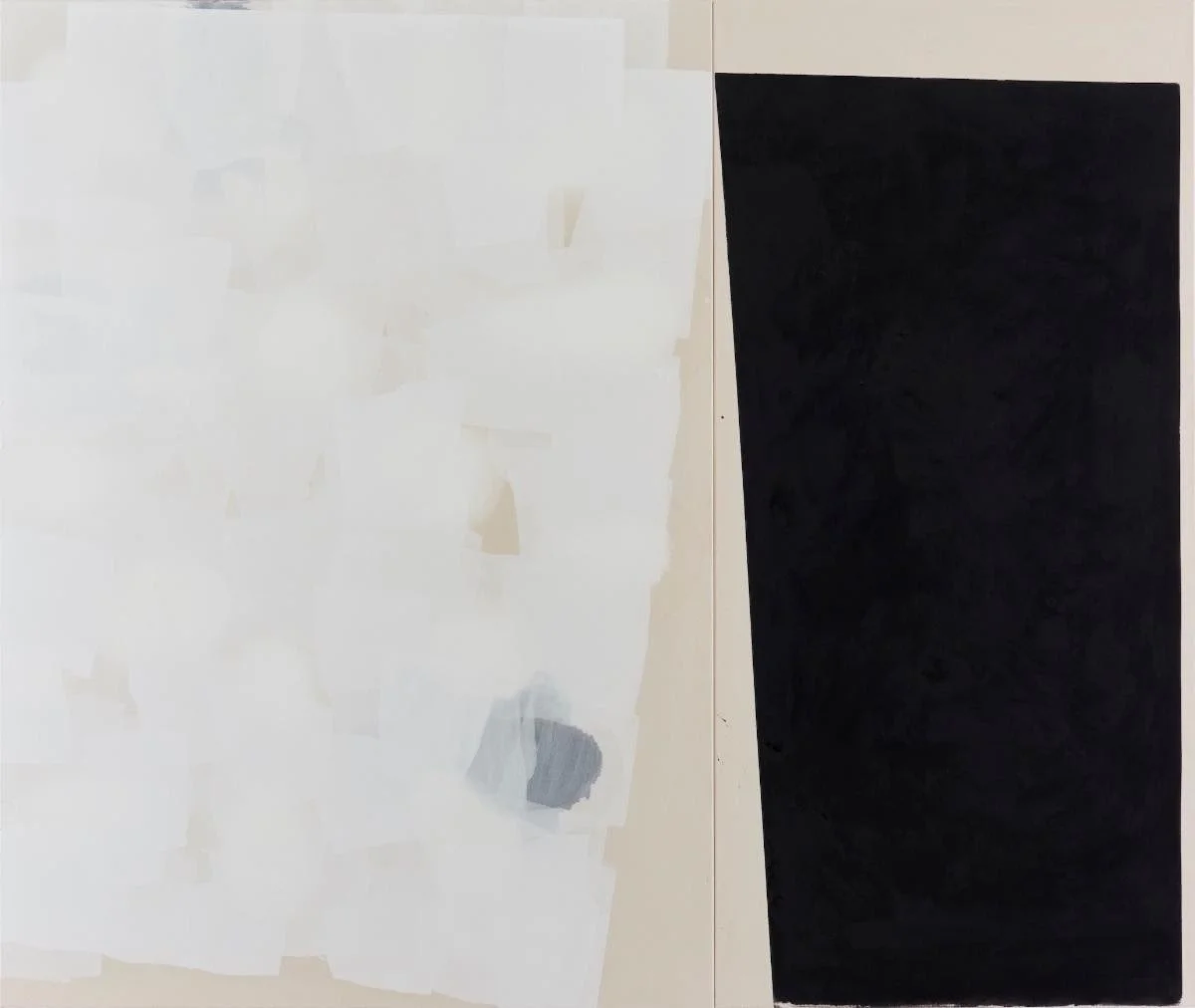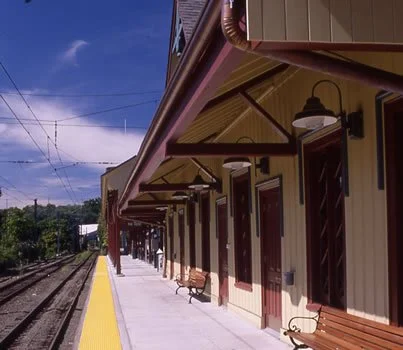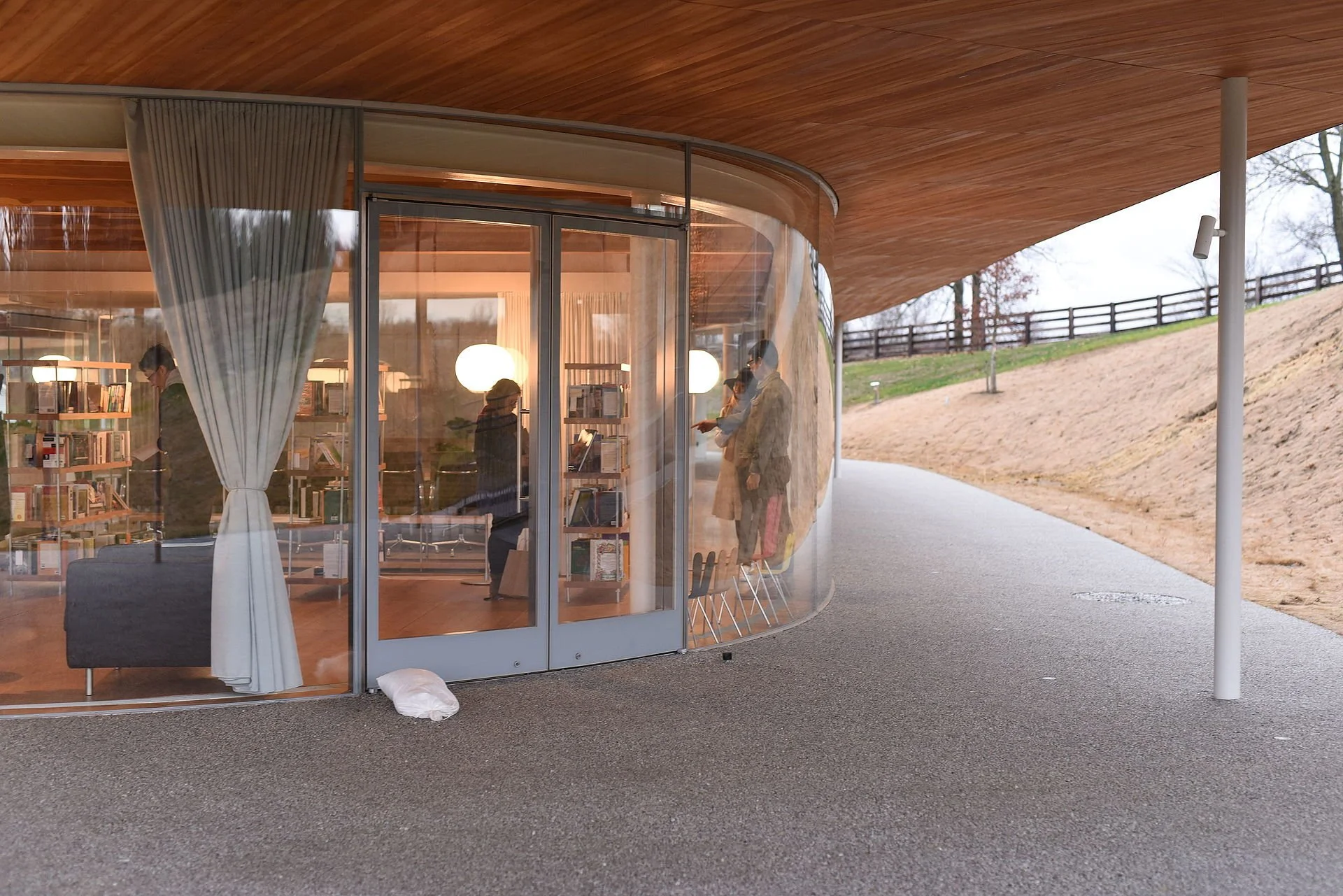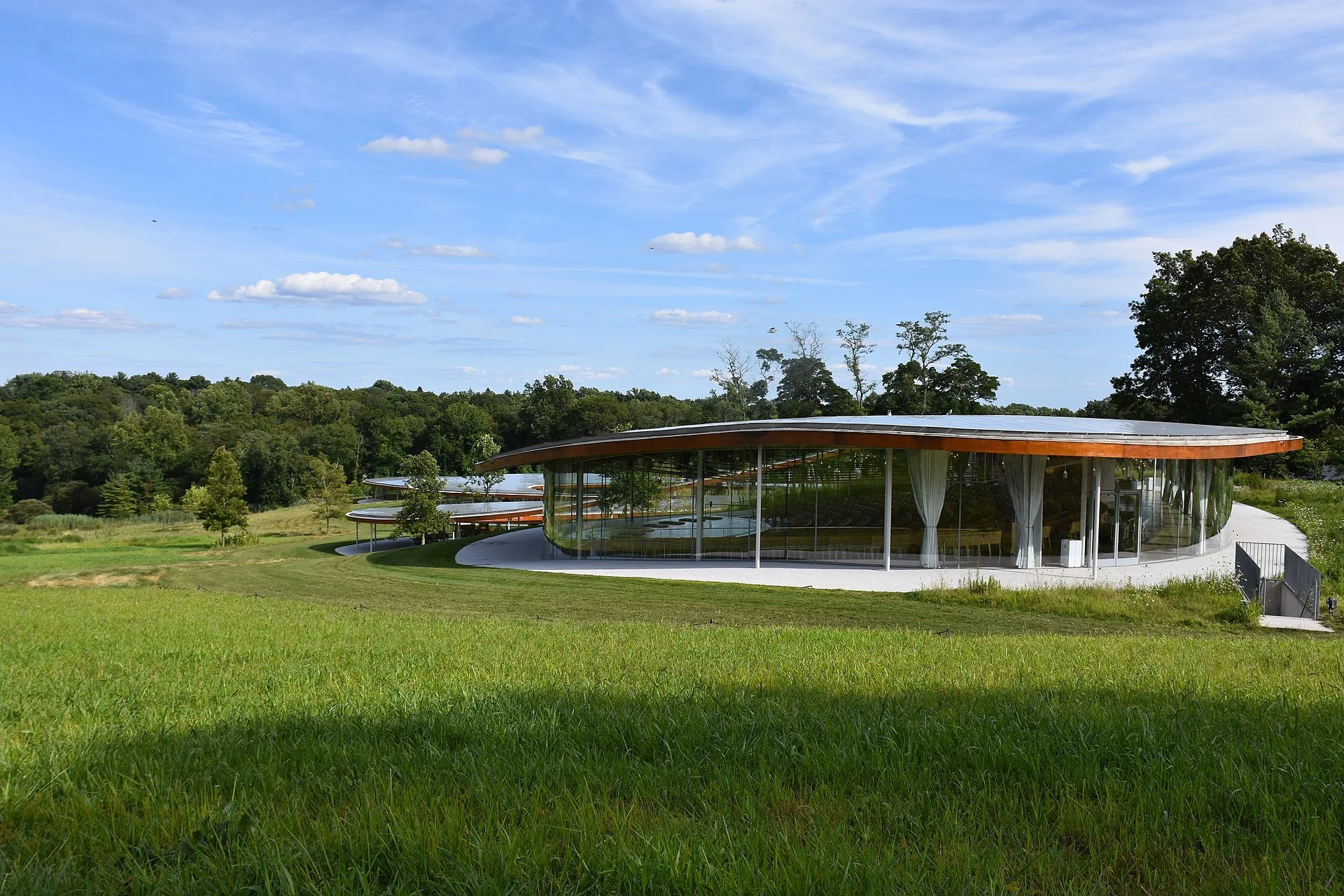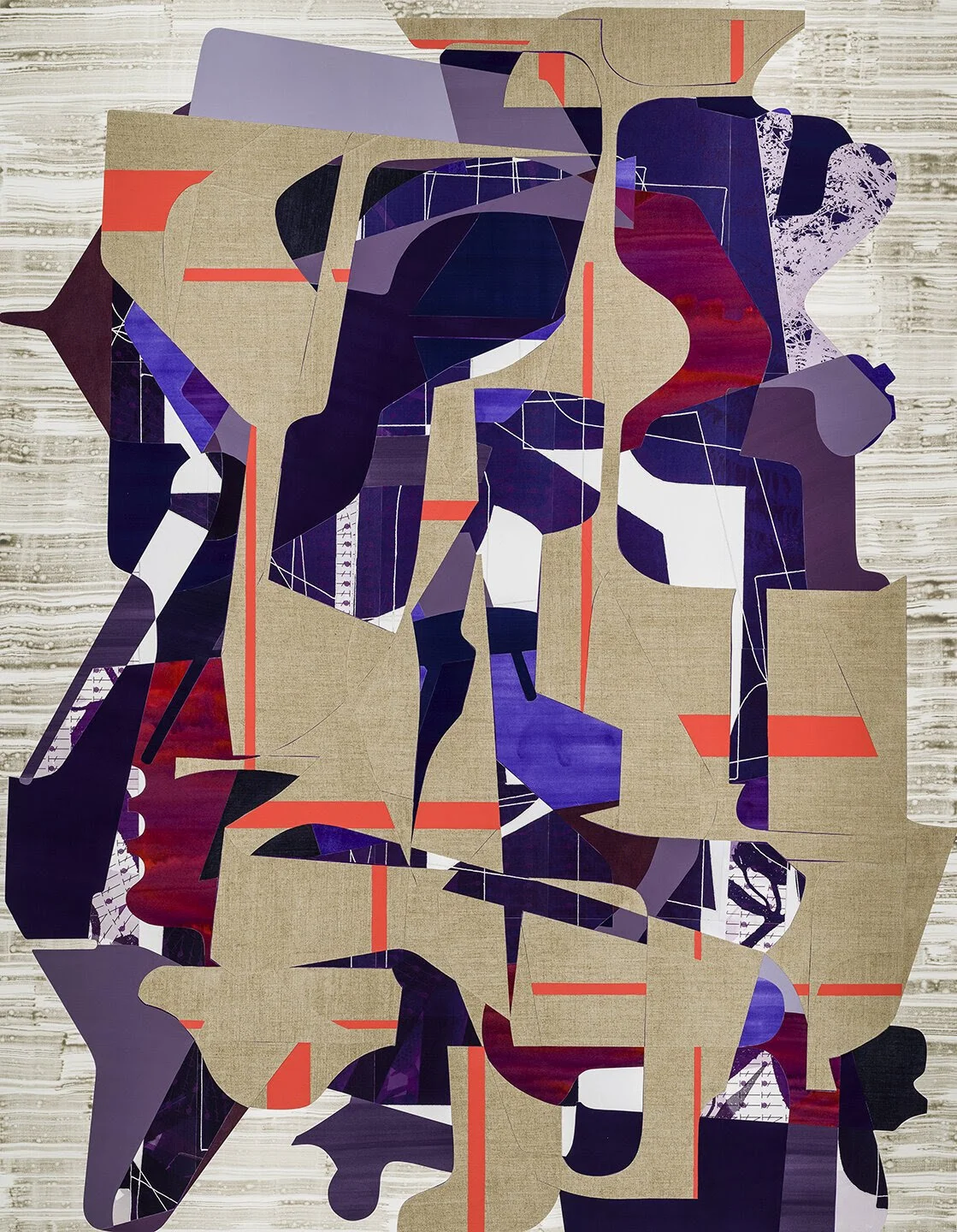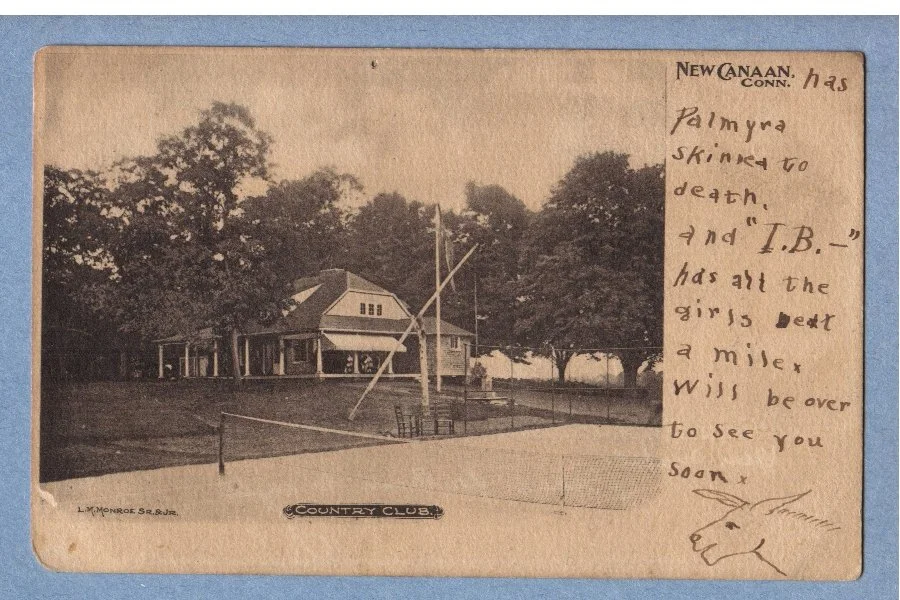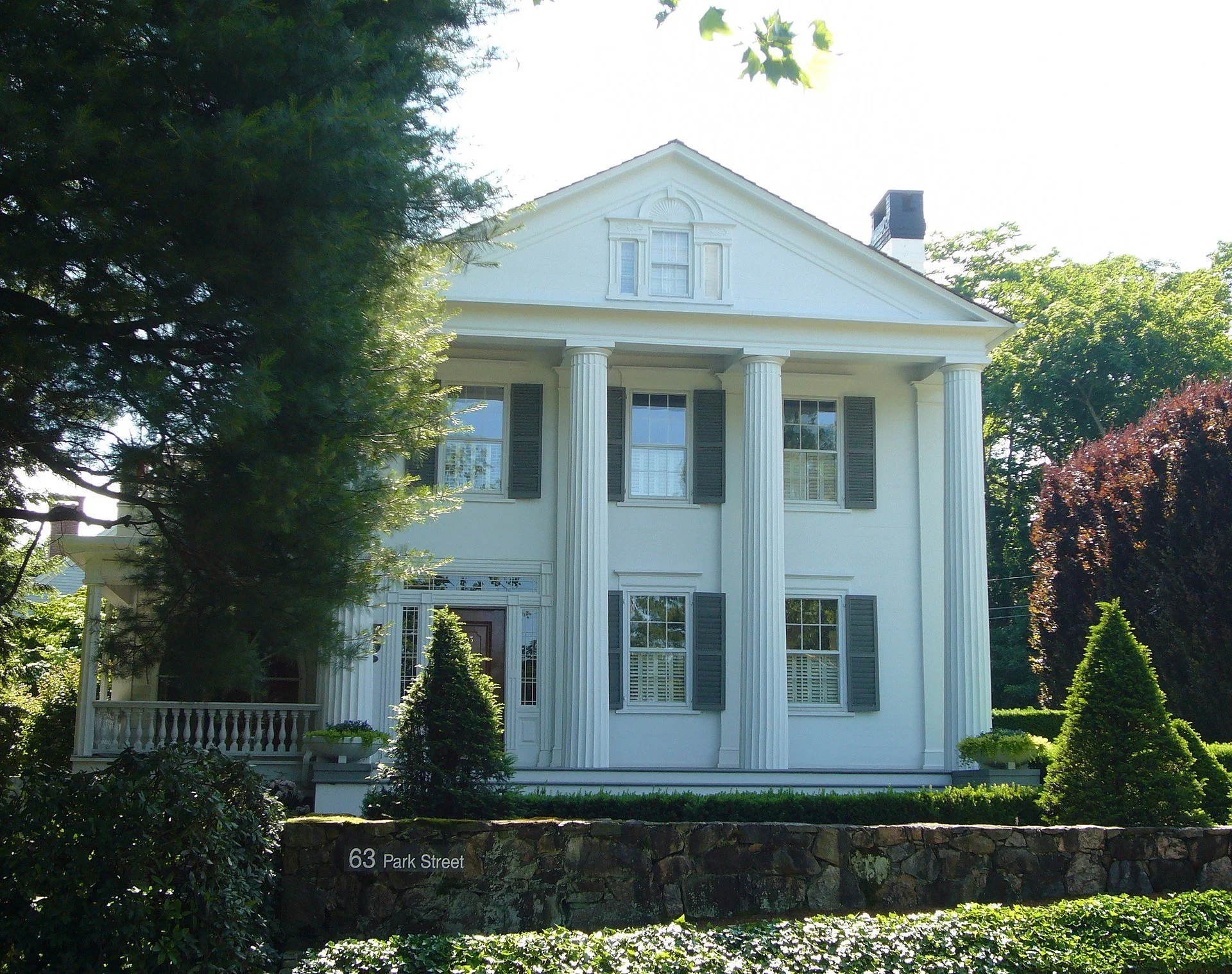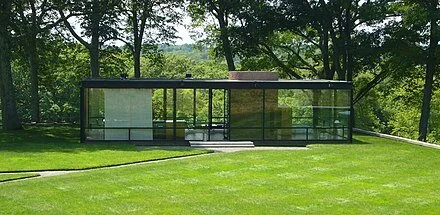
Henge fun and Grace Farms
“Henge XII” (acrylic and oil on canvas; diptych), in Ian McKeever’s show “Henge Paintings,’’ at Heather Gaudio Fine Art, New Canaan, Conn., through Dec. 3
The gallery says:
“McKeever’s five-decade artistic career has been an ongoing exploration of abstraction through the use of oils and acrylics on canvas or paper. He typically creates works in groups, undertaking several canvases at a time which can take him two or three years to complete.’’
A lonely scene at New Canaan’s train station. It recalls the melancholy that pervades the TV series Mad Men, which mostly takes place in Manhattan and New York’s affluent suburbs in the late ‘50s and early ‘60s.
At Grace Farms, in New Canaan, an 80-acre cultural center. Grace Farms is owned and operated by the Grace Farms Foundation, a not-for-profit organization whose mission is to promote peace through nature, arts, justice, community, faith, and Design for Freedom, a new movement to remove forced labor from the built environment.
— Photo by Karl Thomas Moore
The River building at Grace Farms sits amongst meadows and woodlands in New Canaan.
— Photo by Adam.thatcher
‘Between permanent and ephemeral’
“Cautionary Configuration” (paint, painted paper, print material and linen, collaged/adhered to panel), by Aaron Wexler, in his show “Everywhere You Go Is a Shape,’’ at Heather Gaudio Fine Art Projects, New Canaan, Conn., June 4-July 23.
The gallery says:
“Wexler uses sourced materials ranging from photographs, printed imagery, illustrations, and his own drawings to create intricately collaged panels and works on paper. Each element is carefully layered and woven into a graphic framework of color, form, and varying textures. Shapes and lines reveal and conceal themselves as they navigate and compete for space on the surface.
In addition to the optical network of color and forms, Wexler plays with texture and weight through the use of different materials. Pieces of coarse and raw canvas are juxtaposed with thinly painted, more transparent Japanese paper, suggesting a push and pull between the permanent and the ephemeral.’’
New Canaan Country Club circa 1906. Since the early 20th Century New Canaan has been an affluent New York City suburb.
The famed editor Maxwell Perkins (1884-1947) praised New Canaan, where he lived from 1924 to his death:
“{T}he charm of New Canaan, a New England village at the end of a single track railroad with almost wild country in three directions, i.e. wild to the Easterner. An ideal way for bringing up children in the way they should go, girls anyhow.”
Moffly Media noted in 2009:
“Max Perkins, who died sixty-two years ago this June, was the most important American literary figure that you may never have heard of. He wrote no books of his own; his daughters insisted he couldn’t spell or punctuate; and his rivals thought him unsophisticated. Yet as a book editor for Charles Scribner’s Sons, where he worked from 1914 until his death in 1947, he possessed a matchless internal compass about writers and writing, shepherding into print the great works of F. Scott Fitzgerald, Ernest Hemingway, Thomas Wolfe, Edmund Wilson, Ring Lardner and Marjorie Kinnan Rawlings.’’
The Maxwell E. Perkins House, in New Canaan.
— Photo by Staib
It only looks painful
“Unholy 75” (paper), by Matthew Shlian, in his show “Matthew Shlian: Light Years,’’ at Heather Gaudio Fine Art, New Canaan, Conn., June 26-Aug. 7.
The gallery says:
“Shlian’s work straddles the world of paper engineering and the fine arts, a place where two-dimensional paper becomes intricately sculpted into precise and stunning three-dimensional forms. His work is rooted in printed media, book arts and commercial design, where paper gets folded, tessellated, compressed and arranged in unexpected ways. Modular aggregation and the way in which shapes repeat, morph and reconnect with each other have been the artist’s preoccupation for the past several years. Adopting an intuitive approach, Shlian begins with hand-drawn patterns in a notebook and then uses digital mapping on an industrial plotter to work out his ideas. His curiosity with the process continues when he returns to working with paper using his hands, constructing forms out of the everyday material. Color, light, patterns and planar shifts come together in geometric assemblages that reveal themselves as he works. An important part of the artist’s process is the element of surprise: if he can completely visualize a final result, he doesn’t have a reason to create it. Shlian has to start his work and make changes along the way in order to fully understand it. In the same way, the titles of his works, intriguing and serendipitous to be sure, are related to phrases, conversations or musings he has had with his daughters and others.’’==
The late architect Philip Johnson’s famous “Glass House,’’ in New Canaan. It’s now a museum.
Water wonderland
"Reflections'' (7-color silkscreen), by Alex Katz, at Heather Gaudio Fine Art, New Canaan, Conn.
FORECAST FOR BLOCK ISLAND, WHERE SOME WEDDINGS ARE SCHEDULED THI WEEKEND:
446 PM EDT THU SEP 1 2016 TONIGHT NE WINDS AROUND 5 KT...BECOMING N 10 TO 15 KT AFTER MIDNIGHT. SEAS AROUND 2 FT. A CHANCE OF SHOWERS WITH ISOLATED TSTMS THIS EVENING. FRI N WINDS 10 TO 15 KT...BECOMING NE 5 TO 10 KT IN THE AFTERNOON. SEAS AROUND 2 FT. FRI NIGHT E WINDS 5 TO 10 KT. SEAS 2 TO 3 FT. SAT E WINDS 5 TO 10 KT...INCREASING TO 10 TO 15 KT WITH GUSTS UP TO 20 KT IN THE AFTERNOON. SEAS 3 TO 4 FT. SAT NIGHT E WINDS 15 TO 20 KT...INCREASING TO 20 TO 25 KT AFTER MIDNIGHT. GUSTS UP TO 30 KT. SEAS AROUND 5 FT...BUILDING TO 8 FT AFTER MIDNIGHT. A CHANCE OF RAIN AFTER MIDNIGHT. SUN NE WINDS 25 TO 30 KT WITH GUSTS UP TO 45 KT. SEAS 12 TO 13 FT. RAIN LIKELY...MAINLY IN THE AFTERNOON. SUN NIGHT E WINDS 20 TO 25 KT WITH GUSTS UP TO 35 KT... BECOMING NE 15 TO 20 KT WITH GUSTS UP TO 25 KT AFTER MIDNIGHT. SEAS 12 TO 13 FT. RAIN LIKELY. MON NE WINDS 15 TO 20 KT WITH GUSTS UP TO 30 KT. SEAS 8 TO 9 FT. RAIN LIKELY...MAINLY IN THE MORNING. MON NIGHT TROPICAL STORM CONDITIONS POSSIBLE. A CHANCE OF RAIN.
